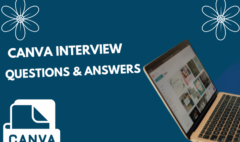Google Ads Question And Answer
Google Ads Question And Answer
1. What Is Google Ads?
Google Ads is an online advertising platform where businesses can create pai advertisements that appear on Google Search, YouTube, websites, and apps. Advertisers bid on keywords, and ads are displayed to users based on relevance and bidding.
2. Why Should Businesses Use Google Ads?
Google Ads helps businesses:
- Reach potential customers actively searching for products/services.
- Increase brand visibility on Google Search and Display Network.
- Target specific audiences based on demographics, location, and behavior.
- Track and measure ad performance in real-time.
3. How Does Google Ads Work?
Google Ads operates on a pay-per-click (PPC) model, where advertisers bid on keywords. When a user searches for related terms, Google runs an ad auction to determine which ads appear based on bid amount, ad quality, and relevance.
4. What Are the Main Components of a Google Ad?
- Headline – The main text that grabs attention.
- Description – Additional text explaining the product/service.
- Display URL – The website link shown in the ad.
- Ad Extensions – Extra information like phone numbers, site links, or location details.
5. What Are the Different Types of Google Ads?
- Search Ads – Text ads that appear on Google search results.
- Display Ads – Image ads shown on websites in the Google Display Network.
- Video Ads – Ads played before, during, or after YouTube videos.
- Shopping Ads – Product-based ads displaying prices and images.
- App Ads – Promotes mobile apps across Google’s networks.
- Performance Max – Uses AI to run ads across all Google platforms.
6. What Is a Google Ads Account Structure?
A Google Ads account is structured into:
- Account Level – Billing, user permissions.
- Campaigns – Overall objectives and budget settings.
- Ad Groups – Contain related ads and keywords.
- Ads & Keywords – Individual ads and targeted keywords.
7. How Do You Create a Google Ads Campaign?
- Select a campaign goal (Sales, Leads, Website Traffic, etc.).
- Choose a campaign type (Search, Display, Video, etc.).
- Define audience targeting (location, language, demographics).
- Set a budget and bidding strategy.
- Create ads and select keywords.
- Launch and monitor performance.
8. What Is the Google Ads Auction Process?
When a user searches for a keyword, Google runs an auction to decide which ads appear. The auction considers:
- Bid Amount – How much the advertiser is willing to pay.
- Ad Quality Score – Based on ad relevance, expected CTR, and landing page experience.
- Ad Rank – Determines ad placement.
9. What Is a Google Ads Quality Score?
Quality Score (1-10) is Google’s rating of an ad’s relevance based on:
- CTR (Click-Through Rate)
- Ad relevance to keywords
- Landing page experience
10. Why Is Quality Score Important?
A high Quality Score:
- Lowers cost-per-click (CPC).
- Improves ad placement.
- Increases ad performance.
11. What Are the Different Keyword Match Types?
- Broad Match – Shows ads for related searches.
- Phrase Match – Shows ads for searches containing the phrase.
- Exact Match – Shows ads for exact keyword searches.
- Negative Keywords – Prevents ads from showing for specific words.
12. What Are Negative Keywords in Google Ads?
Negative keywords prevent ads from appearing for irrelevant searches.
Example: If a business sells “luxury watches,” adding “cheap” as a negative keyword prevents unwanted clicks.
13. How Can You Improve Google Ads Targeting?
- Use geo-targeting to reach local customers.
- Use demographic targeting (age, gender, income level).
- Use audience lists for remarketing.
- Exclude irrelevant audiences using negative keywords.
14. What Is Remarketing in Google Ads?
Remarketing targets users who previously visited your website, showing them ads across the Google Display Network and YouTube.
15. What Are Customer Match and Similar Audiences?
- Customer Match – Uploads customer emails to target specific users.
- Similar Audiences – Finds new users similar to existing customers.
16. How does Maximize Conversions bidding work in Google Ads?
How does Maximize Conversions bidding work in Google Ads?
17. What Is Cost-Per-Click (CPC) in Google Ads?
CPC is the amount charged when someone clicks on an ad. It varies based on competition, industry, and keyword quality.
18. What Is Cost-Per-Impression (CPM)?
CPM is the cost for 1,000 ad views, commonly used in Display and Video Ads.
19. How Can You Lower Google Ads CPC?
- Improve Quality Score.
- Use long-tail keywords.
- Add negative keywords.
- Optimize ad relevance and landing pages.
20. What is the difference between Manual CPC and Enhanced CPC?
- Manual CPC: You set bids yourself.
- Enhanced CPC: Google adjusts bids to get more conversions.
21. What Are Key Google Ads Metrics?
- CTR (Click-Through Rate) – Percentage of clicks per impression.
- Conversion Rate – Percentage of users taking action.
- CPC (Cost Per Click) – Cost per ad click.
- Impressions – Number of times the ad is shown.
22. What Is Google Ads A/B Testing?
A/B testing compares different ad variations to see which performs best.
23. How Do You Improve Google Ads Performance?
- Write compelling ad copy.
- Use high-quality landing pages.
- Optimize keywords and bids.
- Use remarketing for better conversions.
24. What Is the Google Ads Conversion Tracking?
Conversion tracking measures actions taken after clicking an ad (purchases, sign-ups, calls).
25. What Are Smart Campaigns in Google Ads?
Smart Campaigns use Google’s AI to automate ad creation, targeting, and bidding for small businesses.
26. What Are the Different Types of Ad Extensions?
- Sitelink Extensions – Links to different pages of a website.
- Callout Extensions – Additional promotional text (e.g., “Free Shipping”).
- Structured Snippet Extensions – Highlights specific features (e.g., “Brands: Nike, Adidas”).
- Call Extensions – Displays a phone number for direct calls.
- Location Extensions – Shows the business address.
- Price Extensions – Displays product pricing.
- Promotion Extensions – Highlights discounts or special offers.
27. Why Are Ad Extensions Important?
- Increases ad space and visibility.
- Improves CTR (Click-Through Rate).
- Provides useful information to users.
28. What Are Responsive Search Ads?
Responsive Search Ads allow multiple headlines and descriptions. Google automatically tests different combinations to find the best-performing ad.
29. What Are Display Ads and How Do They Work?
Display Ads are image-based ads shown on websites within the Google Display Network. They help with brand awareness and retargeting campaigns.
30. How Can You Track Conversions in Google Ads?
- Use Google Ads Conversion Tracking to measure purchases, sign-ups, and calls.
- Set up Google Analytics 4 (GA4) integration.
- Use Google Tag Manager for tracking multiple events.
31. What Is Google Analytics 4 (GA4) and How Does It Help Google Ads?
GA4 tracks user behavior across websites and apps, helping advertisers understand how users interact with their ads and optimize campaigns accordingly.
32. What Is the Google Ads Attribution Model?
Attribution models determine how credit for conversions is assigned across touchpoints. Common models:
- Last Click – Full credit goes to the last interaction.
- First Click – Full credit goes to the first interaction.
- Linear – Equal credit across all interactions.
- Data-Driven – Uses machine learning to assign credit.
33. What Are Micro and Macro Conversions in Google Ads?
- Micro Conversions – Small actions like newsletter sign-ups.
- Macro Conversions – Main business goals like purchases or lead submissions.
34. How Do You Set Up Google Ads Reports?
In Google Ads Manager, go to “Reports” to create custom reports based on metrics like clicks, conversions, and ROAS.
35. What Is Smart Bidding in Google Ads?
Smart Bidding uses Google’s AI to optimize bids for conversions based on real-time signals like device, location, and time of day.
36. What Is Performance Max in Google Ads?
Performance Max is an automated campaign type that uses AI to optimize ads across all Google channels (Search, Display, YouTube, Shopping, etc.).
37. How Does Google Ads Use AI & Machine Learning?
- Predicts user behavior for better targeting.
- Automatically adjusts bids for higher conversions.
- Recommends ad copy improvements.
38. What Is the Google Display Network (GDN)?
GDN is a collection of over 2 million websites where Display Ads appear, helping advertisers reach a wider audience.
39. What Are the Best Practices for Google Ads Landing Pages?
- Fast Loading Speed – Should load in under 3 seconds.
- Clear Call-To-Action (CTA) – Direct users to the next step.
- Mobile-Friendly Design – Ensures a smooth experience.
- Match Ad Message – The landing page should reflect ad content.
40. What Are the Alternatives to Google Ads?
If Google Ads isn’t effective, businesses can try:
- Facebook & Instagram Ads – Great for social media marketing.
- LinkedIn Ads – Ideal for B2B companies.
- TikTok Ads – Engages younger audiences.
- SEO & Organic Marketing – Drives free traffic over time.








